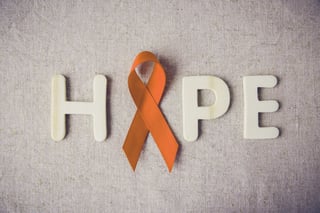
November is COPD Awareness Month. Specifically the third Wednesday of the month is COPD awareness day. That’s coming up next week on the 15th!
According to the World Health Organization, COPD is currently the 3rd leading cause of death worldwide. It is estimated that as many as 13 million people have been diagnosed with the disease but as many more may have the disease and not know it. Symptoms often start off minor. They can include coughing, wheezing, fatigue or shortness of breath. Many people ignore these symptoms or self-diagnose them as exercise induced asthma or allergies.
As of right now there is no cure for COPD but a lot can be done to improve quality of life if the treatment begins in the early stages of the disease. This COPD Awareness Month we encourage you to do more than just turn your Facebook picture orange. We encourage you to help get some of those 10 million plus people who have COPD but haven’t been diagnosed to the, doctor so that treatment can begin. For those suffering from COPD we also encourage you to find ways to better manage your condition, prevent exacerbation, and slow disease progression. It’s true that COPD is a progressive disease but there is a lot that you can do to help yourself. The following are some suggestions on how to help others and help yourselves too.
Quit Smoking
We preach about this all the time but the importance of tobacco free living cannot be over emphasized. If you haven’t quit smoking yet learn all you can about the psychology behind the addiction, research quit aids, and stop today. If you've already quit but know someone else who wants to quit, offer to be their quit buddy, someone they can call when cravings get extreme, someone who will go for walks after work, or take a class with them. Help them stay busy and start a new path to healthier living.
over emphasized. If you haven’t quit smoking yet learn all you can about the psychology behind the addiction, research quit aids, and stop today. If you've already quit but know someone else who wants to quit, offer to be their quit buddy, someone they can call when cravings get extreme, someone who will go for walks after work, or take a class with them. Help them stay busy and start a new path to healthier living.
Know and Share the Common Risk Factors
If you have any symptoms, no matter how mild, please see your physician immediately especially if you have the most common risk factors.
- Former or current smoker
- Long Time asthma sufferer
- Works or worked where particulates are present or somewhere with chemical fumes in the air
If you are at risk take whatever precautions needed to minimize any additional risk, such as staying away from bonfires and those who are smoking. If you know anyone who has any of these risk factors, encourage them to take precautions or eliminate the risks. Keep in mind that close to 25% of COPD patients have never smoked. They have either been exposed to other risk factors or are genetically predisposed to the disease.
Be Aware of Symptoms and Alert Others
As we said, symptoms are sometimes subtle to begin with so if you have any of these symptoms, see your doctor, especially if you have any of the risk factors above. Some of the most common symptoms that are sometimes overlooked are:
- Persistent cough for more than a few weeks

- Waking with a headache
- Swollen ankles, legs, or feet
- Sudden, unexplained weight loss
- Prolonged chest congestion
Share some of these symptoms with your friends via email or social media. If you have COPD, think back to before you were diagnosed and some of the symptoms you may have overlooked and share those as well. It might ring a bell for someone and get them to the doctor for diagnosis.
Find Foods that Help you Breathe Easier
Maintaining a healthy body weight is essential for those with COPD. There are many heart and lung healthy foods and vitamins that provide your body fuel to battle COPD. Not every food works for everyone but resolve to do some research on the subject. If you find some particular minerals or vegetables that seem to ease your symptoms, look up some recipes to incorporate them in your diet. Make it a plan to introduce more vegetables into your diet whether it's one dish a week, or one dish a day, it's a step in the right direction.
Dial Up Your Physical Activity
Maintaining muscle mass and cardio vascular activity are essential for slowing disease progression. Several muscles including the diaphragm and the intercostal muscles help you to breathe.
Muscle tone and core strength lead to good posture making it easier to breathe, and possible to take deeper breaths, and also to exhale more fully. Don't get trapped in the downward spiral of decreasing activity. During exercise patients become out of breath so they decrease their activity level which makes them more short of breath over the long term which makes them decrease again. This month make a pledge to increase your physical activity. Even a small step can make a difference. Do as much as you can as often as you can.
- Walk five more minutes
- Do an additional five minutes of pursed lip breathing
- Learn a new weightlifting pose
- Try yoga stretching
- Do an art or history walk
- Learn Tai Chi
- Go dancing
- Walk the dog an extra block
- Search YouTube for some chair exercises
- Learn the harmonica, trumpet, sax, or other wind instrument
- Walk around a museum, mall, park, or nature trail



